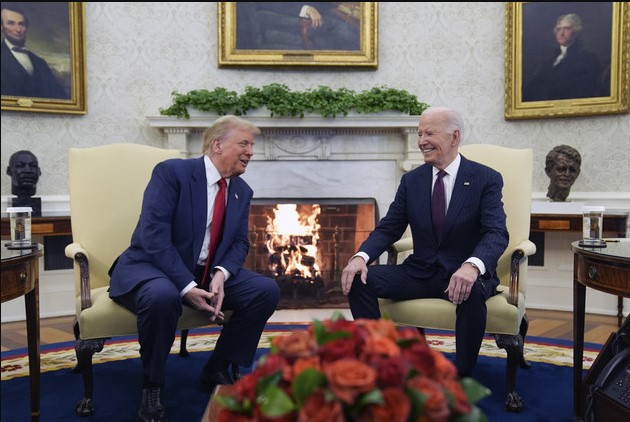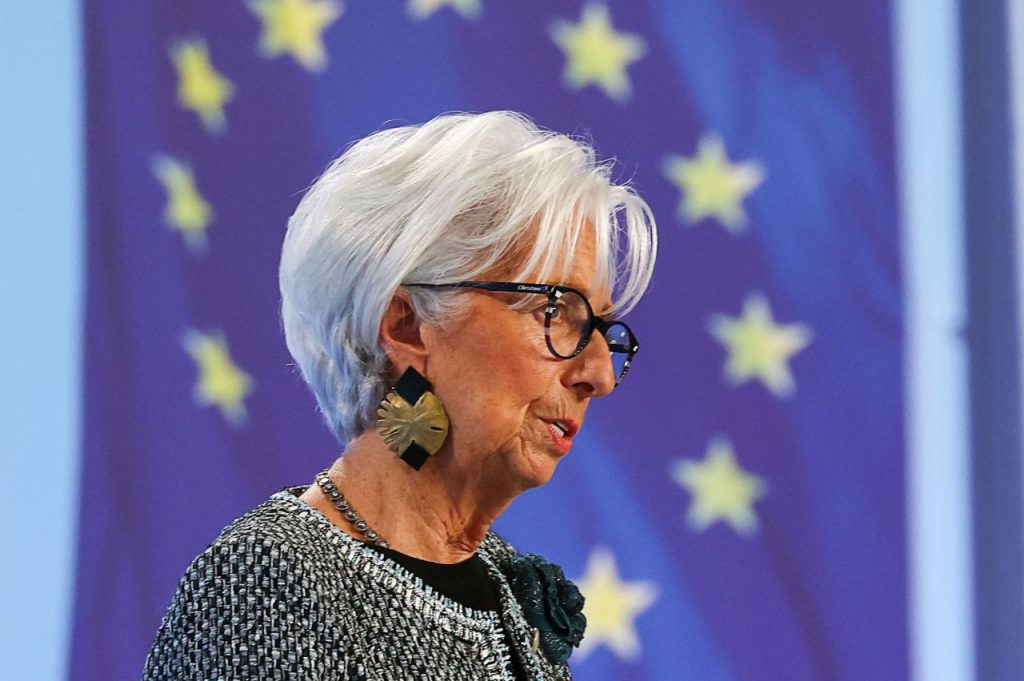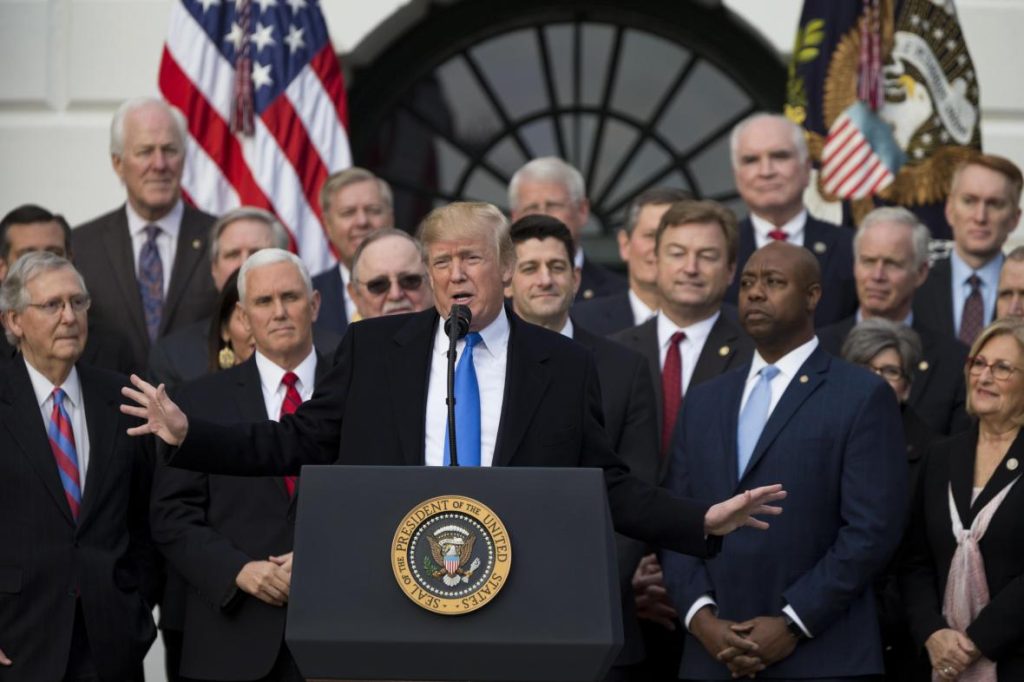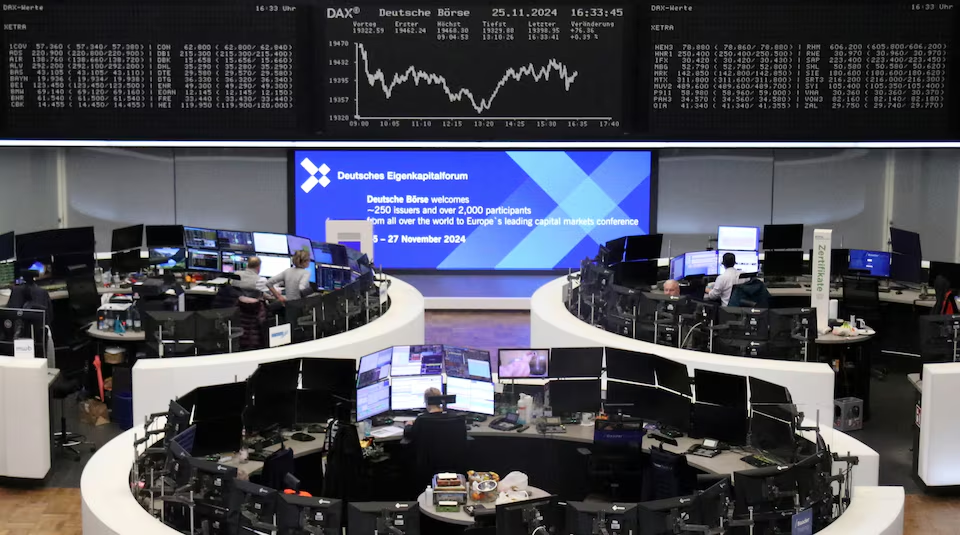Trump’s Economic Rebranding: Turning the Biden Economy to His Advantage

As Donald Trump prepares to return to the White House, he faces the challenge of taking credit for an economy that is in better shape than when he left office, but which still bears the scars of a volatile period under President Joe Biden. With inflation rates falling, consumer spending up, and job growth steady, Trump is poised to rebrand what some have called “Bidenomics” and use it to his political advantage.
Biden’s Economic Challenges: The Unfinished Job
Despite a recovery in key economic indicators, the Biden administration has struggled to convince voters that their policies have created a strong, sustainable economy. While inflation is down from its peak of over 9% in 2021, it remains a significant concern for many Americans. Gas prices have dropped, and grocery inflation has slowed to under 2%, but these gains failed to translate into widespread political support for Biden and his vice president, Kamala Harris.
Voters were more focused on the lingering effects of inflation and the higher cost of living than the broader economic recovery, creating a sense of uncertainty and pessimism. Trump seized on this sentiment during the campaign, hammering the Biden administration for what he called an “economic catastrophe” and pledging to restore the “perfect economy” he claims to have left behind.
Trump’s Strong Hand: Favorable Economic Metrics
Trump enters the White House in a far stronger position than most incoming presidents who have defeated an incumbent. While Biden was confronted with slow economic growth and rising inflation, Trump now inherits a more favorable economic environment. The stock market has seen record highs in recent months, and the U.S. economy grew at a solid 2.7% pace in the third quarter of 2024. Unemployment, though not as low as it was under Trump’s first term, is still well below historical averages, providing a strong backdrop for the incoming president.
Despite this positive economic trajectory, Trump’s ability to claim credit for these gains will depend on his political skill and messaging. He has been quick to highlight the stock market’s surge following his reelection, often attributing market optimism to his political comeback. Wall Street, where many of Trump’s top allies have deep connections, has been eager to echo these sentiments, showcasing the potential benefits of his return to power.
The Economic Risks Ahead
However, Trump’s economic agenda is not without risks. His proposed policies—such as imposing tariffs as high as 60% on Chinese goods—could slow economic growth, according to some economists. The tariffs, part of Trump’s “America First” strategy, may drive up consumer prices, potentially undermining any economic gains. The effects of mass deportations of undocumented immigrants could similarly put pressure on labor markets, potentially spurring inflation and reducing economic output.
Trump’s plan to extend tax cuts from his first term, which are set to expire in 2025, could further strain the federal budget, adding trillions to the deficit over the next decade. While tax cuts may boost consumer spending in the short term, they could also push interest rates higher, making it more expensive for businesses and consumers to borrow.
The Political Calculus: Trump’s Economic Messaging
One of Trump’s greatest strengths has always been his ability to market himself and his policies, particularly when it comes to economic issues. His confidence and branding prowess—skills honed as a businessman and reality TV star—make him a powerful salesman for the economy. Joseph LaVorgna, a former Trump economic adviser, notes that Trump’s confidence in his messaging is key to how he connects with voters. “Confidence is everything,” LaVorgna says, and it’s this confidence that Trump will use to reframe the economic debate.
However, the reality of economic performance may not always align with Trump’s optimistic rhetoric. As economists project, U.S. economic growth is expected to slow in the coming years, with the International Monetary Fund forecasting growth of just 2.2% in 2025. The Conference Board’s Dana Peterson has a bleaker outlook, predicting growth will drop to 1.7%. These projections will test Trump’s ability to maintain political momentum if the economy falters during his second term.
Tax Cuts and Market Confidence: Shaping the Narrative
A major opportunity for Trump will come in 2025 when the tax cuts passed under his administration are set to expire. Trump’s economic team is likely to push for an extension, making the case that tax cuts are essential for sustaining economic growth. Kevin Brady, a former Republican congressman and architect of the 2017 tax reform, has argued that these reforms played a critical role in the economic recovery after the pandemic. Brady places the blame for any lingering inflation squarely on Biden’s policies, positioning Trump’s tax cuts as the key to future prosperity.
This debate over tax cuts is likely to be a major issue in Congress, providing Trump with a chance to rally support among conservatives and moderate Republicans for a pro-growth agenda that centers on tax relief.
While Trump may be inheriting a solid economic foundation, his ability to manage the economy during his second term will be shaped by both global conditions and the domestic political environment. He will need to navigate challenges such as slowing growth, rising deficits, and the possible unintended consequences of his policies. As Hal Lambert, a Republican donor, puts it, “You can bombard people with messaging all day long, but when you go into the grocery store or you go into the restaurant and can’t afford to eat out, no amount of messaging changes that.”
Trump’s economic policies may help drive market optimism, but long-term success will depend on whether ordinary Americans feel the benefits. Voters will be watching not just the stock market, but their own wallets and bank accounts as the next few years unfold. The true test of Trump’s economic legacy will come when the results of his policies impact everyday life.
In the end, Trump’s economic rebranding of the Biden era could be a powerful political tool, but the ultimate measure of success will be whether it translates into tangible improvements in the lives of American families.






